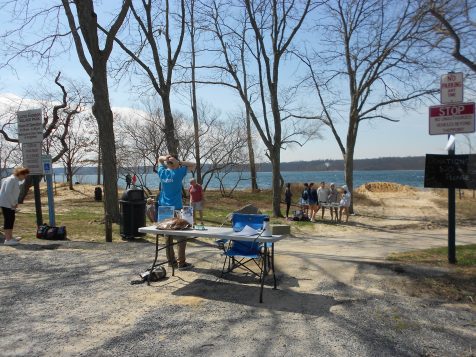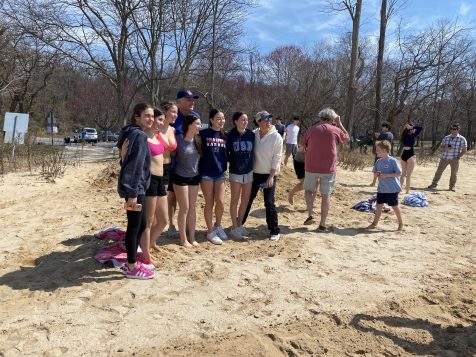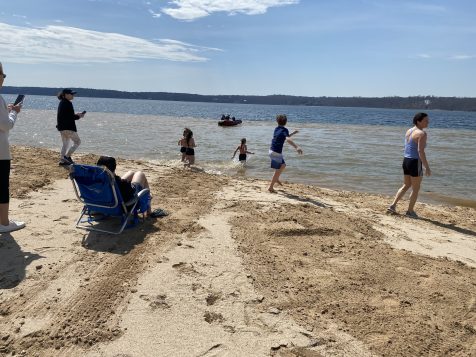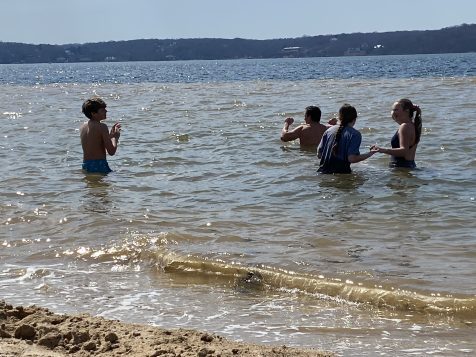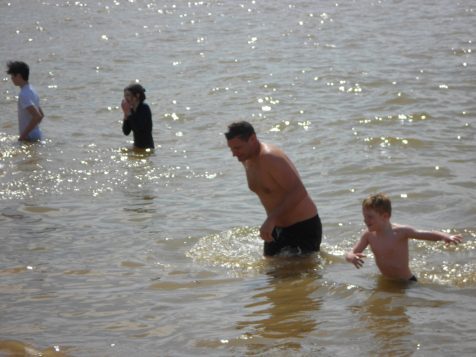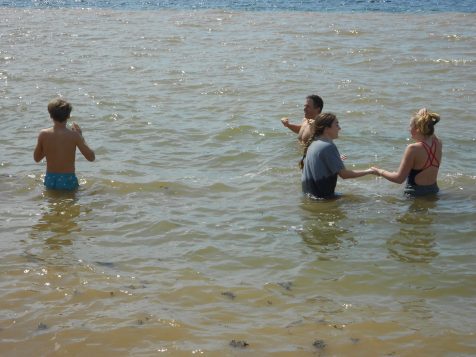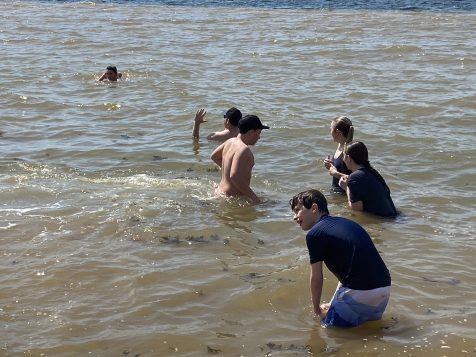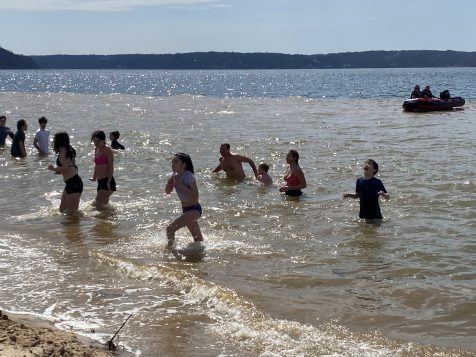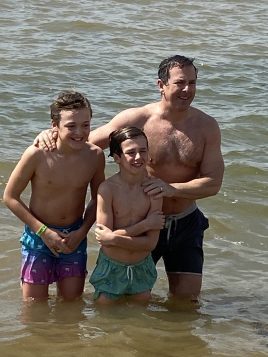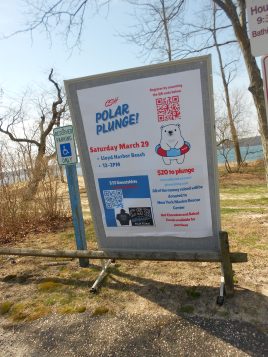Cold Spring Harbor students take polar plunge for marine rescue fundraiser
By William Stieglitz
Students from the Cold Spring Harbor Central School District plunged into the water at Lloyd Harbor Village Park Beach on March 29 to raise money for the New York Marine Rescue Center. This was the second CSH Polar Plunge to be hosted by the school’s marine biology club, which had been planning the event since September. The group, which has about 50 members and does volunteer beach cleanups, is led by science teacher Erin Oshan.
“We are a coastal town. The kids all live near the water, so they’re familiar with the water and the issues that face our marine life,” said Oshan, who teaches biology, marine biology and physics. She emphasized that habitat loss, pollution and microplastics can cause the biggest problems. “So there’s a bunch of kids that are passionate about trying to fix some of those issues.”
About two dozen students participated, consisting mostly of grades 8-12 as well as some elementary schoolers who came with their parents. It was a $20 donation to plunge, with people also able to donate through the purchase of sweatshirts, cookies and hot chocolate. Students described the water as “freezing,” though thankfully not as cold as it had been last time.
“We had a polar plunge here two years ago. It was in February, though, when there was snow,” said ninth grader Molly Yulico. “This one’s nice because it’s, like, 75 degrees out, so it’s pretty warm in the outside temperature.” Several students, after coming out of the water, decided to go back in.
“It was a great success,” said Cold Spring Harbor Superintendent Joe Monastero, who emphasized his pride in the students. “We get our kids down here to participate in an activity to help support marine life and our local ecosystem, and it really brings us together as a community.”
The NYMRC, which received all profits from the event, had an information table set up to explain the work they do in the rescue and protection of marine animals such as sea turtles, dolphins and whales. “We’re in seal season right now,” said intern Lex Reveal. He explained that seals can get stranded for many reasons, but it mostly results from human interaction and pollution.
“Whenever we see a seal that is in an area that’s not safe for it to be in, so in someone’s backyard, for example, we’ll relocate it. If it’s injured, whether that’s from an entanglement situation or it’s been hit by a boat or it’s just sick for any reason, we will come by. We will take it back to the rescue center. We will go through the whole treatment process and then we will release it back into the water when it is healthy again.”
In terms of preventative measures, Reveal said that the best solution is education. “To get out there, tell people why interaction is bad and hopefully try and prevent it in the future.” He explains that interactions such as trying to feed, talk to or take selfies with the seals can be dangerous, not just for the animals but for humans too, especially with some species like the gray seal weighing around 400 pounds.
Reveal encourages anyone who finds a stranded marine animal not to get near it, and instead call the rescue center’s 24-hour hotline at 631-369-9829.


